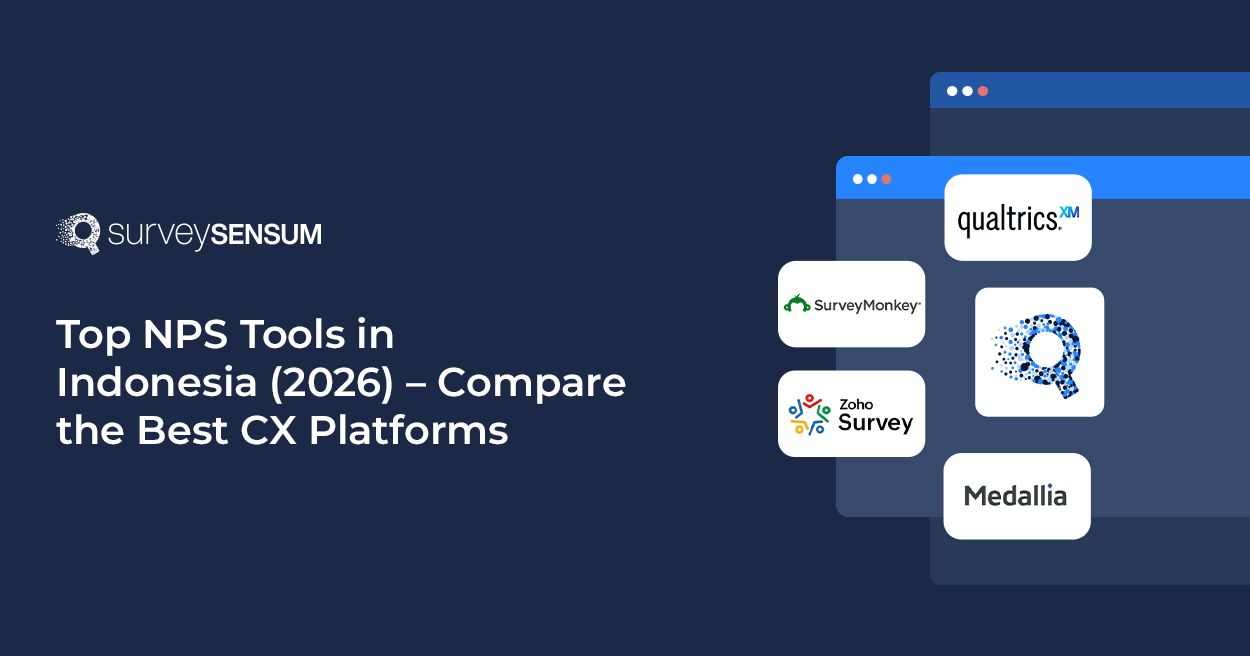

In today’s highly competitive business landscape, companies that prioritize customer feedback are more likely to stay ahead of the curve and meet the evolving expectations of their customers
As a business owner, I was so focused on what I thought was suitable for my product that I forgot to notice customer feedback. After a while, I noticed that my customers were churning. That is when I realized I had been doing it all wrong.
Things started to change when I learned more about the importance of customer feedback and how I transformed it into actionable changes.
In today’s blog, I will teach you everything I have learned in the process and help you take your business marketing to another level.
What is Customer Feedback?
Customer feedback refers to the opinions, comments, and suggestions customers provide about their experience with a product or service.
It is a valuable source of information for businesses as it allows them to gain insights into customer satisfaction, identify areas for improvement, and make informed decisions to enhance the overall customer experience.
Customer feedback can be collected through various channels, such as surveys, reviews, social media, and direct communication.
By actively seeking and listening to customer feedback, businesses can better understand their customers’ needs and preferences, leading to the development of products and services that meet and exceed customer expectations.
Importance of customer feedback
To fully understand the importance of customer feedback and how it could be a game-changer, We’ve outlined the advantages of feedback, highlighting “customer feedback as a competitive advantage:
- Feedback surveys help you determine the positive experiences for some customers and what’s stopping the other customers from having the same experience.
- Customer feedback could give new ideas about what customers need and help you improve your business to satisfy your customers.
- Leveraging these insights with tools like an ai pitch deck generator can help craft compelling presentations, showcasing your data-driven improvements to stakeholders and investors effectively.
- Showing the customer you care about their satisfaction and taking action to apply the changes creates a bond of trust and loyalty with your customer. That means they will introduce your business to their family and friends.
- Smart feedback reviews can separate positive and negative feedback, making satisfied customers where they can promote your business and those with negative reviews backstage, where they can help you with the flaws of your business.
Critical Principles for Collecting Quality Customer Feedback

Smart business owners know that besides taking employee feedback seriously, they should always study and analyze customer feedback to accomplish the company’s goals. The only thing that a business owner wants is to see a smile of satisfaction on the customer’s face.
This is about something other than what your personal preferences are. It is about providing a service for those who demand it how they want it.
Here, I have prepared some of the best strategies for collecting feedback and reviews:
-
Collection Tools
One of the best ways to collect feedback is to use user-friendly tools to receive more accurate feedback. It also makes giving feedback more effortless and more fun for the customers. Also, if your customer feedback tool connects with your existing apps and technology, the workflow will be smooth, enriching your experience and enabling customer success automation with the software.
When I first used a feedback collection tool, I struggled to figure it out. You must remember to predict the best questions and come up with a clear answer to avoid confusion.
-
The Right Time To Receive Feedback
Think of yourself as a customer. After only two days of receiving the product or service, the company asks about your experience and wants to know whether you are satisfied. What would you say? Of course, you haven’t used this product long enough to see if you liked it. So you would say some wildly inaccurate feedback that is not confusing and maybe not even true.
The timing is way more important than it sounds. Give customers a chance to see whether they are satisfied with your product. However, remember to take only a little bit; they might forget who you are!
-
Aligning Methods with Customer Needs
Your strategy to collect feedback should be based on your target audience, in face-to-face conversations, or on specific platforms for submitting feedback. It all depends on the service you provide and those who receive it. For any help with aligning your feedback collection methods with customer needs, you can team up with a good B2C or B2B internet marketing company.
-
Regularly Updating Feedback Collection Strategies
My advice to you is always to stay updated and constantly change strategies. I know it sounds challenging to always come up with new ideas, but in our world, where technology is becoming more advanced daily, you must keep up.
Besides, I have learned in more than fifteen years of owning a business that there needs to be more than just using the same strategy over and over. It is like always using the same path and expecting to end up in a different place. You must try new methods and feedback collection strategies to get better results.
-
Encouraging Unsolicited Feedback
One of the greatest ways of collecting feedback is to encourage the customers to share their opinions in their own words. For example, imagine you only give your customer three options to describe their experience: Very good, good, or bad.
It’s neither specific nor constructive. Give the customers a chance to speak up and say their opinions in their own words.
Comprehensive Feedback Analysis

When I started paying more attention to customer feedback, there was a significant increase in the number of my customers. However, I knew that wasn’t enough. I knew that customer feedback was my door to success and that I should still learn more.
And that’s what I did. I dug deeper and realized I should analyze feedback more professionally and precisely.
In this part, I will introduce some constructive methods to help you analyze customer feedback and discover the reason behind negative reviews.
Data-driven Decision-making In CX Improvement
One of the most famous and popular methods in business is called data-driven decision-making. This method is about using facts for better analysis and making better business decisions. You probably think the whole process of analyzing feedback is boring. I thought so, too. However, over time, I realized that dealing with different perspectives and experiences and highlighting your product’s positive and negative points is an essential and fun activity.
Know What Your Customers Think About You with Surveys
Using Data Visualization Tools
Data visualization tools help you turn the given data into presentations. It also analyzes the data and puts them in a chart. This way, you can have a better understanding of your data.
Below are some valuable and famous visualization tools:
Transforming Feedback into Actionable Insights

Transforming customer feedback into action shows the customer you value their opinion and you care about their insights. This increases customer trust and loyalty towards you. Additionally, when you embed Instagram post, you can showcase customer testimonials and feedback, further reinforcing the importance you place on their input.
Of course, it is crucial to prioritize feedback instead of recklessly jumping into them. You should have a strategy and a plan to know what to work on next to avoid any issues as much as possible. For example, let’s say you have two pieces of feedback: one says the product needs a better name, and the other says your platform has too many technical flaws. Which one would you fix first? If you want to know what would be the best decision you can make in circumstances like these, you should follow the below tips:
-
The importance of translating feedback insights into tangible actions to improve CX
Imagine you go to a restaurant. But you realize the band in the restaurant is too loud and won’t let you relax and speak to your friends. So you tell the manager about the issue. The next time you go to that restaurant, the band will still play loud music. You feel offended, right? You address the issue again and expect your request to be answered this time. But they still don’t care. And eventually, you choose another restaurant to eat your meal at.
In this simple imaginary scenario, you can see the importance of turning feedback into action. Whether you offer a service or a product, you need to listen to your customers and put their satisfaction first.
Receiving and analyzing feedback but not transforming it into action is like spending hours preparing the essential items for making a cake. But when all the items are gathered, you leave the kitchen and do not bake the cake.
-
Outline a framework for prioritizing feedback and developing action plans.
So, now it is time to make the cake and put it in the oven! Of course, you need a recipe first, right?
Outlining a framework and planning to realize when and how you will use the data is essential. You categorize your data based on urgency and their impact. You prioritize the data and start working on them one by one.
-
Successful Examples
There are a lot of successful companies that have tried feedback-driven CX methods. Amazon, to name one. Amazon has built a reputation for excellent customer service by constantly collecting and analyzing customer reviews.
Another example is Starbucks. Personally, I can not start my day without Starbucks coffee. This company uses its My Starbucks Idea platform to gather customer suggestions and feedback. I always share my opinion on this platform, and it is wonderful how they are willing to change things based on user’s preferences.
Continuous Feedback Loop for Ongoing Improvement

-
The concept of a continuous feedback loop for continuous CX improvement.
Let’s get back to the restaurant scenario, but this time, let’s assume you are the restaurant manager. One of the most effective strategies to satisfy your customer is to have a regular feedback loop. This means you ask the customer to share their opinion to improve their time at the restaurant. Maybe when they have finished eating the food and are waiting for the check, you can give them a piece of paper and ask them what they think. Or you can create a system in which they can rate the food from one to five stars. Another important aspect is to promptly respond to bad restaurant reviews, showing customers that their feedback is valued and taken seriously. This way, you realize which food receives the most negative feedback and discover why.
-
The importance of regularly collecting and analyzing feedback
In our restaurant scenario, imagine you realize the cheeseburger receives the most negative feedback, and people think the meat tastes terrible. So, after gathering the information, you know you need to change the recipe, and with the help of your regular feedback system, you can easily find out whether people like it or not, and they can tell you how you can make it even better. Right?
I’m trying to say that a regular plan for gathering and analyzing feedback is vital because that is the key to success in the business world. Customers are on your side if you’re on theirs.
Conclusion
Feedback refers to the opinion of customers about the product you provide. They can tell you about their experience using it and how they think it can be improved.
Some business owners, like me, when I started my business, might need to learn the critical role feedback collection plays in their business. Pay close attention to feedback and learn helpful strategies to gather, analyze, and transform them into action.
The whole point is to gain your customer’s trust and to let them know you care about what they think of your product and that you want to improve based on their preferences.















